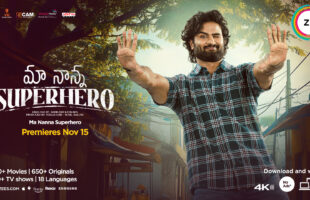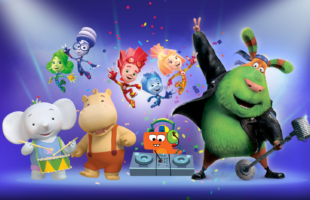The Ministry of Information & Broadcasting (I&B) in India permitted 77 private satellite TV channels in 2009 to uplink/downlink under guidelines, taking the total number of channels to 512. Of these 249 are news channels and 263 are non-news channels. This increase in the number of channels continues to pose deeper challenges for advertisers and media agencies. The fragmentation splits audience media consumption, calling for astute planning solutions which allow for better targeting and focused media solutions. For media owners, too, the sailing gets tougher with growing acquisition and running costs. In its global study ‘Magna Inflation Update’ on the media pricing outlook for 2010-2011, Lodestar Universal projects India’s inflation at nine percent for 2010. The Indian context shows significant increases across TV, newspapers and the Internet, the key media mix driving most advertisers and increasing pressure on advertisers not only to match, but to beat inflation to drive value from their ad spend. Audience vs revenue share As per the estimates, free-to-air (FTA) channels’ viewership share went down from 21.9 percent in 2008 to 21.1 percent in 2009. The percentage of total revenue share declined from 30.1 to 28. In the case of pay-TV channels, audience share went up by one percent to 78.5, whereas, revenue share rose from 69.9 percent to 72 percent. In all, total TV advertising pie increased from Rs. 7895 crores (US$1.754 billion) to Rs. 9285 crores (US$2.063 billion). Sudha Natrajan, president and chief operating officer, Lintas Media Group told Television Asia Plus, the dispersion of revenue between FTA and pay channels is in line with their share of viewership. “While FTA channels have marginally over-leveraged on revenue relative to their share because of DD1 and a few regional channels. Going forward, this trend is unlikely to change unless some new laws come into play,” says Natrajan. Genre-wise, mass channels’ audience share went up from 22 percent to 25 percent, whereas their cumulative revenue share dropped by three percent to 28 percent last year. “Hindi GEC or mass, sports (Cricket) and Hindi News are over leveraged ie these genres have managed to garner more revenue than their fair share of viewership. While Andhra Pradesh and Tamil Nadu channels are underleveraged, the main reason for this is over/under pricing of these channels. Overall, there is no change in dispersion trend in these two years,” said Natrajan. In the wake of ongoing fragmentation within the TV broadcasting sector, Natrajan referred to following trends: • Shift of loyalty from channels to programme formats • 34 percent increase in advertising secondage but not all advertising is watched. Ad avoidance is on the rise • Increase in region-specific content, region-based shows on Hindi GEC (stories based in Gujarat, Punjab, Rajashtan etc) to garner greater local interest and viewership • Increase in channels in local languages and dialects for example Mahuaa TV in Bhojpuri • Surge of homegrown reality formats on GECs (Rakhi ka Swayamwar etc.) which have done well • News channels attempting to sprinkle GEC content (increasing coverage of reality shows on GEC channels) Rajesh Kamat, group COO Viacom 18 and chief executive officer Colors, said that there is not much of a marked change in the GEC sector with respect to ad revenues. “The top three channels seem to be getting the lion’s share of the pie despite tremendous fragmentation in the sector,” said Kamat. Monica Tata, vice president and deputy general manager – Entertainment Networks, South Asia, Turner International India Private Limited (TIIPL) mentions that with multiple channel launches across different genres, most channels and genres experienced fragmentation in 2009. “The kids’ genre, however, created an exception to this rule and posted a six percent growth over 2008 (CS 4-14 All India audiences). Also, 2009 is the first time when the genre crossed the 15 percent genre share mark. The growth was fuelled by increase in Hindi Speaking Markets (HSM) shares which improved by 11 percent over 2008,” said Tata. “Half of this HSM growth (50 percent) was contributed by POGO alone. The Turner Network has grown twice as fast as the genre. Turner’s advertising revenue increased over last year, and we continue to dominate the kids’ advertising pie, enjoying the lion’s share of the market.” Viewers Kamat says today’s viewer is an enlightened viewer who is open to experimenting with newer trends in programming. “Initially, television was the means for the lady of the house to escape from the daily drudgery of her life. And shows were created to cater to this very need without laying any emphasis on meaning. However, today, storylines and programming have undergone a huge makeover. Today, importance is given to stories that are realistic and meaningful. Today’s shows have no defined black or white characters…they are all human beings…each one with shades of grey which make them real and easy to relate,” says Kamat. Natrajan says the average consumer is getting more voyeuristic and flirtatious as a result of which ad avoidance has increased. Broadcasters and advertisers alike have realised this and have increased investment on content with greater customisation like Advertiser Funded Programmes, title sponsorships with integrations etc. “In order to garner better quality eyeballs advertisers have increased sponsorships from 11 percent of total TV spends to around 15 percent this year,” said Natrajan. Approach “Today advertising as we know is undergoing a paradigm shift. While the advertising pie has grown for most genres, advertisers are no longer dependent on the 30 second spot. They are willing to break the clutter by bringing in various innovations and working with the shows and their genres in creating an integrated brand experience. Today advertisers prefer to engage in a lot of innovative active and passive brand integrations and Advertiser Funded Programs (AFPs) rather than the 30 second spot buy,” says Kamat. Natrajan mentioned that last year both advertisers and media agencies got more cautious and prudent with their spends. “Apart from FMCG and telecoms most big categories cut down on spends. ROI became the new buzz word in 2009. In the face of adversity some advertisers got bolder with investments in properties clearly realising the merit of rapid salience build-up and the positive rub-off on brand stature, classic example of this is Havells India a company which was obscure two years back is suddenly in everybody’s mind thanks to IPL and other associations with cricket,” she said. According to Lintas, the only category to watch for in 2010 would be telecom, the top five telecom companies accounted for five percent of TV spends in 2007-08 in 2008-09 it shot up to 8 percent, with interservice mobility around the corner, telecom companies will move from average revenue per user (ARPU)-led advertising to market share-led advertising which will result in share of voice wars and consequently, a bigger race for sponsorships and properties. Cricket The number of cricket properties continues to be on the rise. One of the most sought after events is Indian Premier League (IPL), which lasts for almost 50 days. Broadcaster Multi Screen Media Pvt. Ltd (MSMPL), which operates Sony Entertainment Television, is targeting $14-15 million worth in advertising revenues this year. Reports say that the broadcaster has been selling its 10-second advertising spots at US$10,000, which is 200 percent more than the initial ad rates in the IPL season one at $3,300 per 10 seconds and 80 percent higher than the initial rate in the second season. For the male-focused brands, IPL has been an instant hit and fit. For the rest of the brands, especially the female targeted, it is a huge set back with GRPs especially in prime time dropping by about 10-15 percent, says Natrajan. “Almost all the advertisers and media agencies who do not work in the male/ youth space have begun talks with GEC channels for differential rates. The channels are only too happy to oblige. There are few advertisers who cannot afford to be on-air going in for team tie-ups and activation. The share of this type of revenue has increased for the franchise owners in IPL two over IPL one and is only going to grow,” said Natrajan. Interestingly, Viacom18’s Hindi GEC Colors has signed a deal with IPL to launch a series of new entertainment initiatives to attract more fans into the IPL fold. The IPL, on behalf of its franchisees, has entered into a unique entertainment licensing deal with the channel. As part of this deal, IPL cricket stars will now be seen on the channel through various format shows, extending the IPL franchise beyond IPL season. Leading the pack will be none other than a Special IPL Edition of ‘Fear Factor – Khatron Ke Khiladi IPL Special’, Colors’ flagship format show. That apart, Colors also plans 2-3 other shows including an ‘IPL Awards Night’ and 42 other ‘IPL Nights’. Colors’ Kamat acknowledged that IPL always definitely manages to dent the viewership of other channels, adding that the degree of viewership drop could be anywhere in the range of eight to 10 percent. “However what IPL does manage to do is suck out a chunk of monies from the industry during that period,” he said. For its part, Colors is trying to combat this by capitalising on two of India’s biggest passions – cricket and Hindi movies. “While IPL is seen as a challenge or hurdle by a lot of GEC broadcasters, Colors plans to take advantage of this situation as we are cognizant of the fact, that cricket is a passion in our country. Thus, we have entered into a unique partnership with IPL. While, Colors always had Bollywood and glamour, now with cricket added, it cannot get any bigger,” Kamat said. In another interesting development, it has been finalised that the IPL’s 2010 season will be broadcast live on YouTube, following an arrangement between the league and Google, owners of the internet channel. The deal – under which all 60 games will be shown live or on a short delay on a dedicated YouTube channel – will apply across the world, except in the USA, which will have re-broadcast options. The agreement gives Google exclusive online rights for IPL content for two years, with both parties sharing revenues from sponsorships and advertising. This is the first time Google is live streaming a major global sport on YouTube, the companies said in a joint statement. As per the information available, the most significant aspect of the deal is the amount of control it gives the viewers, who will be able to customise their viewing experience by choosing between different camera angles. Additionally, they will be able to freeze, fast-forward and rewind the feed, as well as watch replays at any time during the day. On the IPL-YouTube deal, Natrajan said this is an excellent thing to happen to the country. “All of us have been talking about ‘Media Convergence’ in the last decade with little or no practical application of the same. We have to wake up and understand that content will increasingly become media agnostic as the consumer contribution to content creation increases. When he or she creates content, they are most likely to use the camera on their mobiles and upload it on the net. There is no threat to any medium, each of them will serve us in their own way. Channels on the other hand will tend to make more money with chances of content syndication increasing,” said Natrajan. Challenges Fragmentation is here to stay, says Natrajan. She added that the number of reality shows will increase in order to aggregate higher number of eyeballs for compressed/shorter periods of time. “Home grown formats will drive reality content. Big budget content will continue to drive viewership as the viewer is used to new content and innovation does not come cheap. As far as niche goes, MTV dropped the baseline of Music Television two years ago, they are a youth channel as of now. 70 percent of their content in 2010 is going to be non-music. 50 percent of the non-music content is going to be big budget serials. Similarly, Pogo has a late night movie time-band in a bid to garner older audiences. Increasingly the focus is on higher bases, soon the word niche will be passé on TV at least,” she explains.
Ad – Before Content
Related Articles
ZEE5 Global announces the digital premiere of Telugu blockbuster Maa Nanna Superhero
Citadel: Honey Bunny Was Prime Video’s Most Watched Series Globally This Weekend
BBC World Service announces new six-part audio drama Purple Heart Warriors
Animotion Media Group Signs Exclusive Deal with ADA
- Banijay Rights Appoints Sarah Mottershead as VP for Middle East, Africa, Israel, Greece & Cyprus
Sarah Mottershead as VP for Middle East, Africa, Israel, Greece & Cyprus
TelevisaUnivision partners with Anima Kitchent to broadcast Cleo & Cuquin







